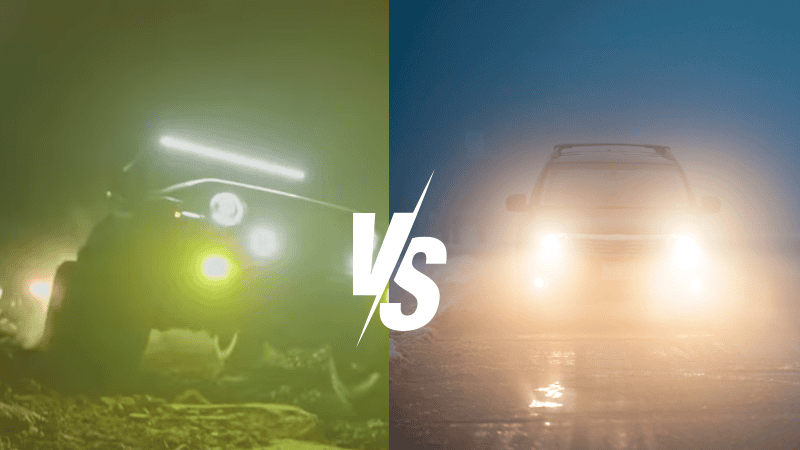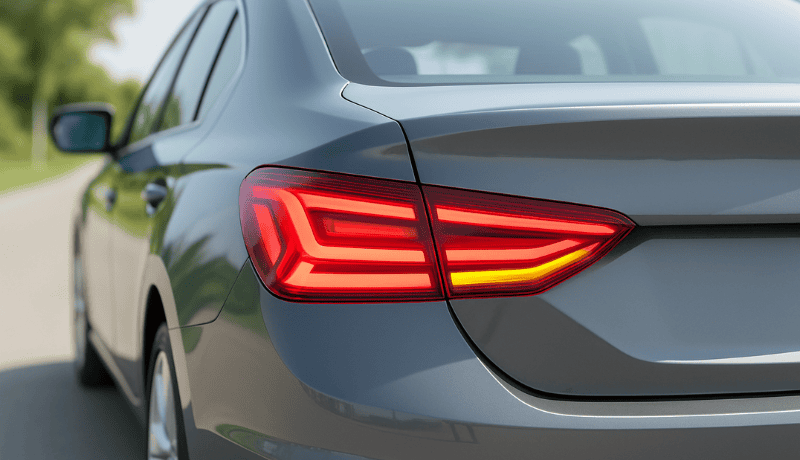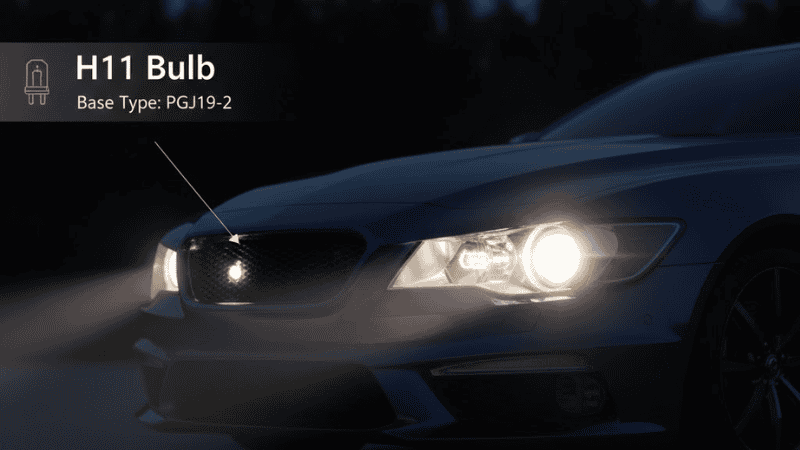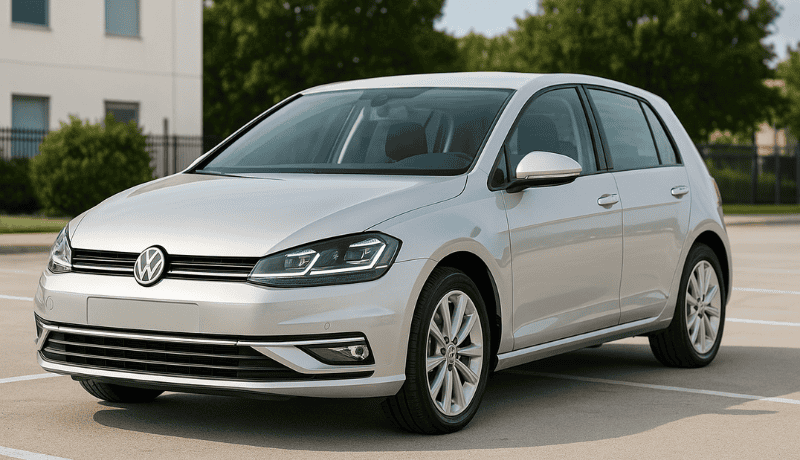Do you want to know amber or white, which fog light you should choose, and why? Amber lights have longer wavelengths, scatter less, and cut through fog better. White lights, on the other hand, appear brighter and are more effective in clear weather but can cause a blurry mess. So, which one is the best choice for your car?
This well-researched, science-backed article explains why one should choose one over another and when. Want to learn? Keep reading this article, and you’ll know the clear difference between both types of fog lights, as well as their benefits and downsides. Here we come….
What are Fog Lights?
Fog lights are additional car lights designed to help you see better in bad weather conditions, air moisture levels or smoke reduce the road visibility. They’re mounted on the front bumper of your car, below the headlights. Their strategic positioning and wider but shorter beam allow the light to travel through thick air (loaded with water vapors, or smoke) and illuminate the road ahead at a shorter distance.
These driving lights are different from both Daytime Running Lights and headlights. Headlights are placed higher than fog lights so that their light beam can travel farther to spread light on the road at a wider but lower range. At the same time, Daytime Running Lights run in the form of light bars and are significantly less bright, primarily aiming at illuminating cars to make them more noticeable for oncoming traffic Thus, they play a unique role in road safety.
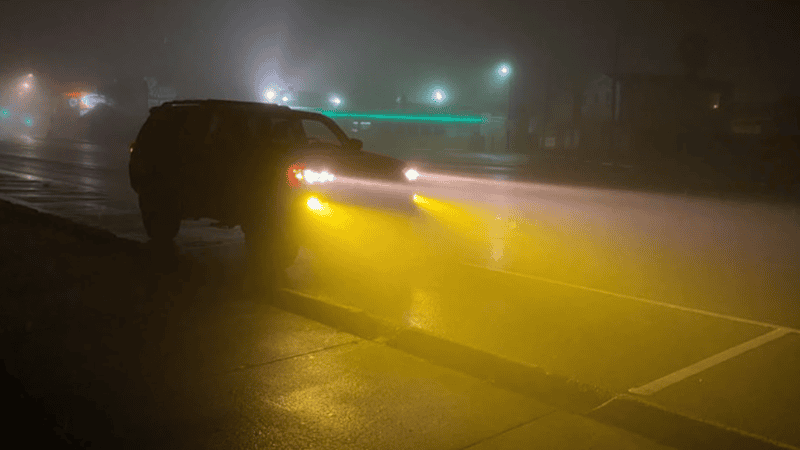
Fog lights come in yellow or amber lenses, just like the colors of headlights or Daytime running lights vary. Those in amber color cut through fog better because they scatter less. While others with white light can reflect off fog, making it harder to see.
When it comes to using fog lights, remember their intended use. If used on a clear night, they can be distracting to other drivers—their glare may compromise road safety. So, in such a case, opt for headlights as your main source of light when driving in clear or dry weather conditions.
Likewise, you can’t rely on Daytime Running Lights (DRLs) when you need to be noticeable in foggy or snowy weather. You’ll lose your visibility on the road for other drivers, which can be risky. Therefore, it’s essential to have fog lights on your car/vehicle to ensure you drive safely on the road.
Now that you understand how fog lights color affects visibility, let’s explore the two main types of these lights according to their making.
- Halogen lights are the traditional, inexpensive, but less bright type of fog light. These lights use a filament, which gets hot to create light. They’re also less energy efficient.
- In comparison, LED fog lights, which use tiny light-emitting diodes, are more durable and brighter.
Fog lights are powerful special lamps, perfect for foggy weather, rain, or snow. However, their careful use is essential as they can blind to oncoming traffic on clear nights.
Why Do Fog Light Colors Vary? The Science

Light is made up of many colors—each color has its wavelength. Wavelength is the distance between two peaks of a wave, and it affects how light spreads when it travels through a medium like air, fog, rain, or snow. (The shorter the wavelength is, the more light scatters or spreads—it moves in many directions). Red light has a long wavelength, so it scatters less. However, blue light, with its short wavelength, scatters the most. Other colors fall in between.
Amber light is a mix of red and yellow. It has a longer wavelength than blue or violet light. This means it scatters less in fog, rain, and snow. Because it scatters less, amber light can cut through these conditions better. This makes it easier for drivers to see the road.
The science behind this is called the Rayleigh phenomenon. It explains why the sky looks blue during the day. Blue light from the sun scatters in all directions in the atmosphere. At sunset, the sky looks red because the light travels through more atmosphere, scattering the blue light out of view and leaving the red light.
Amber light works well in low visibility for the same reason. Its longer wavelength means less scattering. This makes it more effective in fog, rain, and snow.
White fog lights can also help, but their effectiveness depends on their color temperature. Color temperature measures how “warm” or “cool” the light looks. It is measured in Kelvin (K). Warmer white light, around 3000K to 4000K, has a yellowish tint. Cooler white light, around 5000K to 6000K, looks more blue.
Warmer white light works better in fog than cooler white light. This is because cooler white light has more blue, which scatters easily. Warmer white light has more yellow, which scatters less. So, warmer white light can penetrate fog better than cooler white light.
In short, light’s wavelength, which is a byproduct of its colors, affects how it behaves in fog, rain, and snow.
What are Amber Fog Lights?
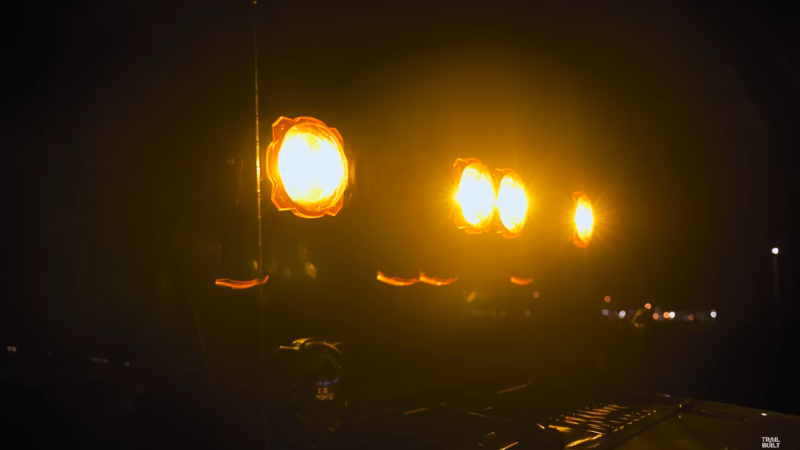
As stated earlier, amber fog lights are special car-mounted lights featuring a yellowish-orange color with only warmth of 2,700K or below. Their specific color helps them stand out from regular white or blue lights—it gives them longer wavelengths than blue or white lights. This means the light is sharper and less scattering, so it can travel through thick fog, rain, or snow–it’s more like a focused beam.
The result?
The driver can see the road more clearly, and other road users can also easily notice the vehicle in the foggy or unclear air.
Benefits of Amber Fog Lights
Amber fog lights have many benefits over others. Some of these are:
1. Less Glare
One big benefit is reduced glare due to selective yellow light. Glare happens when light reflects off surfaces and hits your eyes. This can cause serious problems for other drivers, especially those coming from the opposite direction. However, amber fog lights, thanks to their reddish-yellow color, create less glare for the driver. Therefore, they make safer lights for everyone on the road.
2. Better Visibility
Amber fog lights also improve the visibility of road markings and lane dividers. Their yellowish-orange light makes these lines stand out more. Consequently, drivers stay in their lanes and avoid accidents.
3. Less Strain on Eyes
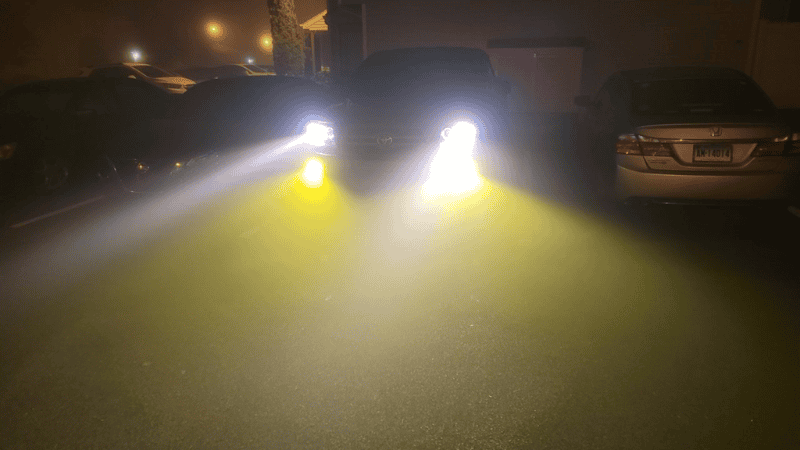
Another benefit of amber lights is less eye strain. Unlike popular belief, white or blue light can be hard on the eyes during long drives. In contrast, amber light is softer and easier on the eyes. Therefore, you experience minimal eye strain and have more comfortable and long drives.
Drawbacks of Amber Fog Lights
Indeed, until now, you must consider the amber fog lights to be the best. Yet, they have cons too! Some of these are:
1. Less Aesthetic
Some drivers find them less visually appealing. They might prefer the look of white or blue lights.
2. Not Mandatory for All cars
Also, not all cars have amber fog lights, so drivers might need to buy and install them separately.
Hence, amber fog lights, along with yellowish-orange lights, are highly helpful for drivers to see better in fog, rain, and snow. Their targeted throw on the road, less glare, improved visibility, and less eye strain prove them a better choice for safe driving. However, some drivers might not like their color, which, indeed, has no relation to their practical application.
What are White Fog Lights?
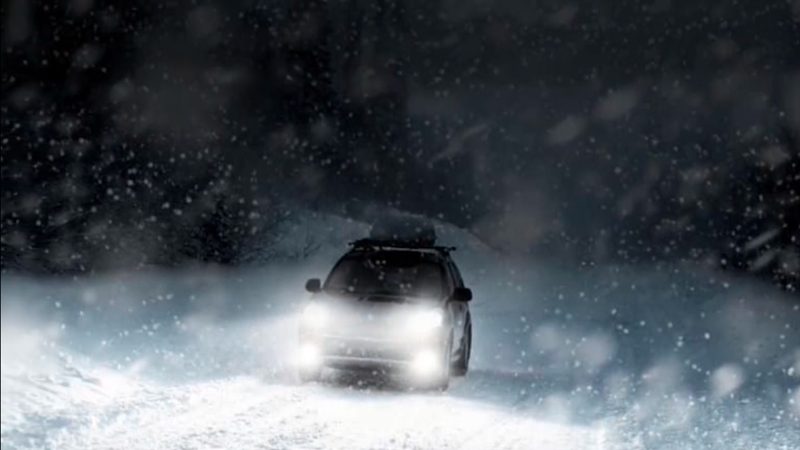
White fog lights are fog lights with more blue light in them–they aren’t particularly white. Again, regardless of your general idea about colors, they have more heat in them as the Kelvin scale states: ranging from 4000K to 6000K. The shades range from cool white to warm white–still, they’re warmer than amber.
Benefits of White Fog Lights
Owing to their longer wavelength, warm temperature, and more scattering nature, white fog lights have unique uses, which translate to their benefits:
1. Enhanced Visibility
White fog lights appear brighter to the driver. For this reason, they can make the driver feel like they see better.
2. Suitable in Areas with Less Foggy Weather Conditions
In fair weather, white fog lights are highly effective. They can light up the roadsides to help drivers see animals, signs, and other things efficiently. Some drivers also like the look of white fog lights. They think these lights make their cars look more modern and stylish.
Drawbacks of White Fog Lights
White fog lights also have some limits.
1. More Glare
In fog, rain, and snow, they can cause more glare. Glare makes it hard to see.
2. Washed Out Effect in White Fog
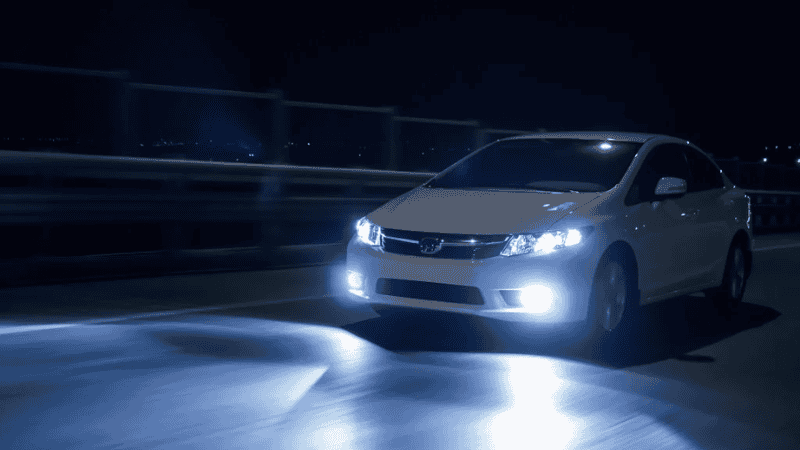
The light from white fog lights can reflect off water droplets, creating a washed-out effect that makes things blurry or faded. This can be particularly dangerous and may cause accidents.
3. Not Good for Road Marking
White fog lights are also less effective at lighting up road markings. This makes it hard to see lane dividers and edges in bad weather.
In short, white fog lights, with their warm color, long wavelength, and more scattery properties, might help some drivers see better or work well in clear weather. Yet, in bad weather, they can cause glare and reflections and reduce road marking visibility.
So, it’s critical to consider their potential cons before installing or using them based on your color preference.
Amber vs. White Fog Lights: The Ultimate Comparison
| Feature | Amber Fog Lights | White Fog Lights |
|---|
Long story short, you can use amber for lights for lots of fog or rain, and white for clear roads. Some cars even have both! Pick the right light for the right weather!
Legal and Safety Considerations Regarding White or Amber Fog Lights Usage

Fog lights are like super helpful flashlights for your car, but you need to check your local rules and regulations before installing or using them—They may even require you to change them, in case of non-compliance. Some common regulations are:
- In some places, it’s illegal to use fog lights when it’s not foggy, rainy, or snowy. This is because using them in clear weather can blind other drivers and lead to accidents.
- Drivers should only turn on fog lights when visibility is low. This helps everyone on the road stay safe.
- Additionally, fog lights should be properly installed and aimed. They should not shine too high or too low. Improperly aimed fog lights can dazzle other drivers. This can be dangerous, especially at night.
- Check fog light functionality regularly. This ensures they’re working correctly. If fog lights are broken, they should be fixed promptly.
Hence, it’s important to follow the fog light laws for road safety. You should only use them in poor visibility conditions. Similarly, proper installation and maintenance are also important to prevent accidents and ensure they function effectively.
Conclusion
In conclusion, we can say that foggy weather can be scary! It’s hard to see the road ahead. Fog lights save you in bad weather. But which color is best? Here’s a quick summary:
- Amber fog lights are like yellow flashlights for your car. They cut through thick fog and rain and don’t blind other drivers. They’re also easier on your eyes.
- White fog lights seem brighter, but they can make fog worse. They might be okay for clear weather, but not for rain or snow.
You can choose any depending on your local weather conditions and regulations.
No matter what kind you choose, make sure to follow the rules. Only use fog lights when you need them. And double-check that they’re aimed correctly.
Upgrade Your Fleet with High-Performance Fog Lights from Carlightvision!
Ready to enhance your driving safety and visibility in all weather conditions? Upgrade your car with the best fog lights available. Check out Carlightvision’s latest selection of amber lenses and white fog lights.
As a leading car lights manufacturer in China since 2008, we provide top-quality and affordable automotive lighting solutions. Let us help you transform your driving experience. Contact us today!
